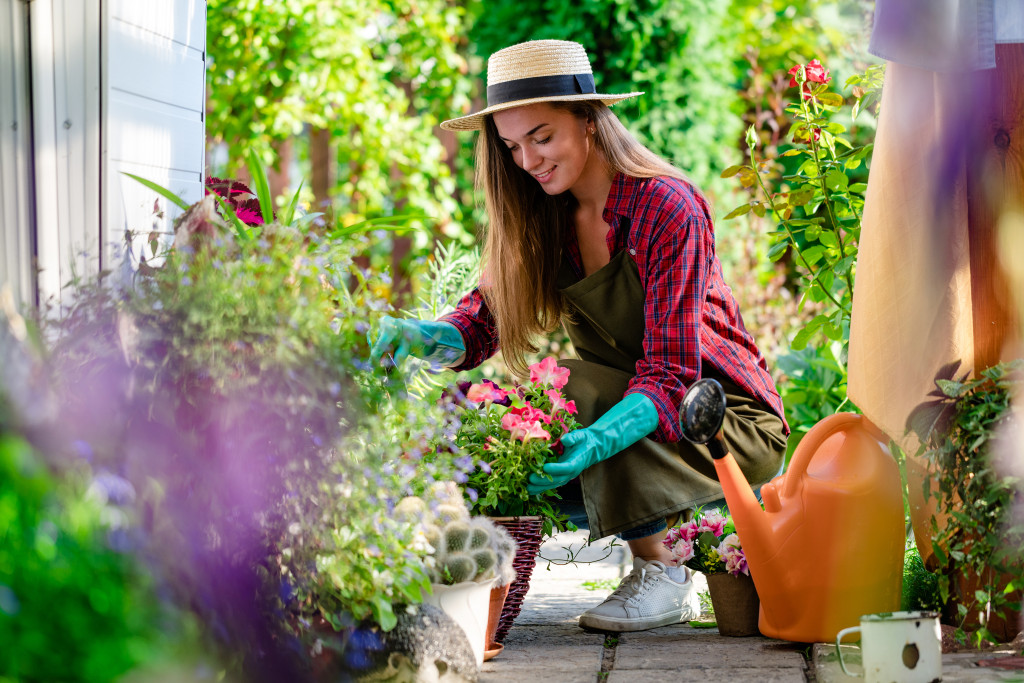- Determine your garden’s purpose in selecting fitting plants, considering the local climate, soil conditions, and sunlight availability.
- Hiring garden design services can aid in creating a cohesive and functional garden catering to specific needs.
- Consider the maintenance needs of your plants, and select ones that suit your available time and gardening skills.
- Personal preferences regarding the color, texture, and shape of plants play a crucial role in creating a garden that reflects your style.
Having a home garden is a great way to add a touch of nature to your living space. Planting trees and plants is not only aesthetically pleasing, but it also provides fresh air and filters out pollutants. But with so many plant and tree options available, it can be challenging to determine which ones are best suited for your garden. This comprehensive guide will help you navigate the world of gardening and provide tips on how to choose the best plants and trees for your home garden.
Determine the Purpose of Your Garden
Before choosing plants and trees for your garden, think about the purpose of your garden. Will it be a place for relaxation? Do you want to add some colorful flowers to your front yard? Do you need some privacy from your neighbors?
The purpose of your garden will dictate which plants and trees are best suited for the area. For example, if you want a relaxing space, you may want to choose some low-maintenance plants like succulents or ornamental grasses. If you want to add some color, consider adding some flowering plants like petunias or impatiens.
When planning your garden, it’s crucial to take into account whether the area needs to be kept moist or dry. Some plants thrive in damp conditions, requiring regular watering, while others prefer more parched soil and can tolerate periods of drought.

Hire Garden Design Professionals
If you’re feeling overwhelmed by all the choices, consider hiring a professional garden designer. Hiring garden design services will help you select plants and trees that work together to create a beautiful and functional garden. They can also provide advice on the following:
Climate and Soil
Different plants and trees thrive in different climates and soil types. Before you choose any plants or trees, check your local climate and soil conditions. Some plants and trees may require acidic soil, while others need well-draining soil. Additionally, some plants may not be able to tolerate extreme temperatures or humidity levels. By understanding your climate and soil, you can choose plants and trees that will thrive in your garden.
Amount of Sunlight and Shade
Plants and trees require different levels of sunlight and shade to flourish. Some plants thrive in full sun, while others require partial shade. Before choosing any plants or trees, determine how much sunlight and shade your garden receives throughout the day. This will help you identify which plants and trees will thrive in your garden. If you have a lot of shade, you may want to choose plants like ferns or hostas.
Maintenance Requirements
Some plants and trees require very little maintenance, while others require regular pruning and fertilization. Before you choose any plants or trees, determine the amount of upkeep required. If you don’t have a lot of time to dedicate to your garden, you may want to choose low-maintenance plants like succulents or ornamental grasses. If you enjoy spending time in your garden, you may want to choose plants that require regular maintenance, like roses or fruit trees.

Consider Your Personal Preferences
Ultimately, your personal preferences will play a role in the plants and trees you choose for your garden. Consider the colors, textures, and shapes of the plants and trees you are interested in. For starters, you may want to consider a mix of evergreen trees, flowering plants, and ground cover. When it comes to color, you can go for bold hues or subtle shades.
Think about how they will complement your home’s architecture and landscaping. By considering your personal preferences, you’ll end up with a garden that reflects your unique style and personality.
If possible, visit a garden center or nursery to get a closer look at the plants and trees you are interested in. Speak with the staff for advice on which plants and trees will work best in your garden.
Choosing the best plants and trees for your home garden can be overwhelming, but by considering the purpose of your garden, climate, soil conditions, sunlight and shade, maintenance requirements, and personal preferences, you’ll be able to create a garden that thrives and reflects your unique style. Whether you’re a beginner or an experienced gardener, use this comprehensive guide to choose the best plants and trees for your home garden.

